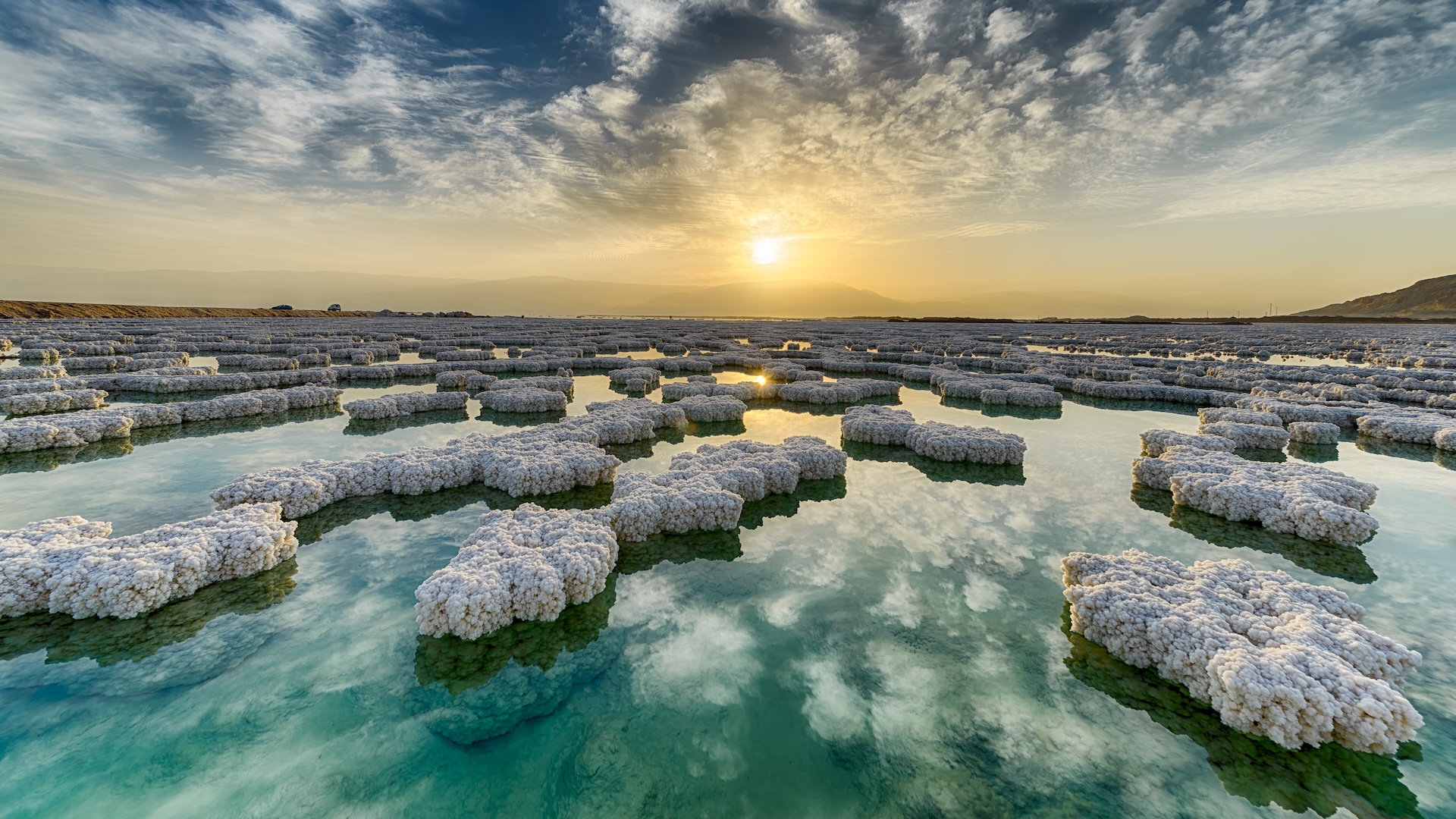
What’s Earth’s lowest point on land?
How did your country report this? Share your view in the comments.
Diverging Reports Breakdown
What’s Earth’s lowest point on land?
The banks of the Dead Sea lie about 1,300 feet (430 m) below sea level. The Dead Sea is not the deepest point on Earth’s surface. That distinction belongs to the Challenger Deep in the Mariana Trench. The “Dead Sea” was named by monks, who noticed that life seemed to be absent from the salty water.. The basin of the southern Dead Sea “extends down close to 15 kilometers [9.3 miles], and that part of the basin is only about 10 kilometers [6 miles] wide,” Zvi Ben-Avraham said. The fault that forms the basin “is moving about 5 millimeters [0.19 inches] per year,” Pockalny said. “The San Andreas Fault moves 10 times faster,” a marine geophysicist told Live Science. ” understanding what is going on on this part of Earth is very, very expensive”
The highest point on Earth’s surface is the top of Mount Everest , which towers more than 29,000 feet (8,800 meters) above sea level. But what’s the lowest point on land?
The lowest spot on dry land are the banks of the Dead Sea in the Middle East. These lie about 1,300 feet (430 m) below sea level, according to the National Oceanic and Atmospheric Administration (NOAA) .
The banks of the Dead Sea are the lowest point on dry land but not the deepest point on Earth’s surface. That distinction belongs to the Challenger Deep in the Mariana Trench , a point in the Pacific Ocean that reaches about 35,876 feet [10,935 m] below the planet’s surface.
The precise depth of the Dead Sea’s surface can vary daily. According to NASA , on a hot, dry summer day, the water level can drop as much as 1 inch (2 to 3 centimeters) because of evaporation.
The Dead Sea, which is not really a sea but a large saltwater lake, is 47 miles (76 kilometers) long and up to 11 miles (18 km) wide. The “Dead Sea” was named by monks, who noticed that life seemed to be absent from the salty water, NOAA noted.
Sign up for our newsletter Sign up for our weekly Life’s Little Mysteries newsletter to get the latest mysteries before they appear online.
The Dead Sea lies along the Dead Sea Fault, which spans about 600 miles (1,000 km) from the Red Sea to the Taurus Mountains in Turkey and started forming nearly 20 million years ago, according to a 2006 study in the journal Earth and Planetary Science Letters . The fault helps form the boundary between the African tectonic plate to the west and the Arabian one to the east. NASA notes that the Dead Sea lies in the Great Rift Valley, which is currently ripping the African continent apart .
“The Dead Sea fault is primarily a transform fault, similar to the San Andreas Fault in California, where two plates are moving next to each other,” Rob Pockalny , an associate marine research scientist at the University of Rhode Island, told Live Science.
Related: How many tectonic plates does Earth have?
Both sides of the fault are moving northward, “but the eastern side moves a bit faster, about 5 millimeters [0.19 inches] per year,” marine geophysicist Zvi Ben-Avraham , director of the Minerva Dead Sea Research Center at Tel Aviv University in Israel, told Live Science. In comparison, “the San Andreas Fault moves 10 times faster.”
Previously, researchers suggested the Dead Sea formed essentially because of a zigzag in the Dead Sea Fault. If the Dead Sea Fault was perfectly straight, one side could slide relatively smoothly next to the other. However, if the fault had a zigzag in it, then as one side slid past the other, a gap would form in the zigzag area where both sides of the fault were pulling apart. Such a ” pull-apart basin ” could have steep walls, helping to explain why the Dead Sea is so low in elevation, Pockalny said.
However, the standard model of pull-apart basins suggest they become long before they become deep. In contrast, the basin of the Dead Sea is significantly wider than it is deep, Ben-Avraham said. The sediment that makes up the floor of the southern Dead Sea “extends down close to 15 kilometers [9.3 miles], and that part of the basin is only about 10 kilometers [6 miles] wide.”
Instead, Ben-Avraham and his colleagues suggest the Dead Sea is a “drop down basin.” As both sides of the fault slid past each other, they spread apart a bit, “but then an isolated chunk of basalt detached from them and dropped down starting about 4 million years ago,” Ben-Avraham said. “So the Dead Sea basin became deeper while its other dimensions stayed fixed.”
Determining which model of the Dead Sea’s formation might be correct is challenging “because these motions are very slow,” Ben-Avraham said. “Understanding what is going on in this part of the crust in real time is very, very difficult and expensive.”
Source: https://www.livescience.com/planet-earth/geology/whats-earths-lowest-point-on-land
